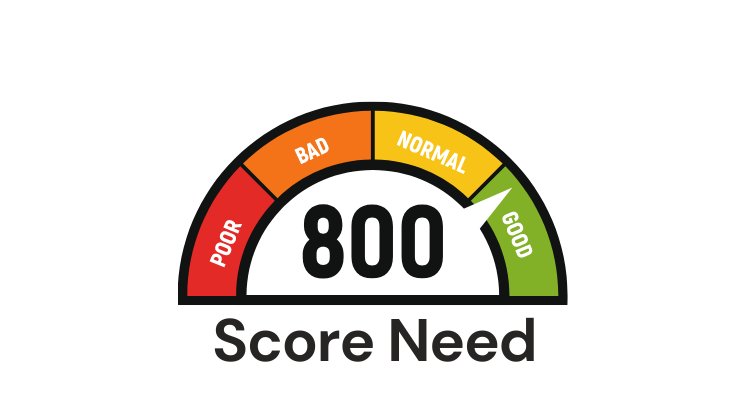Credit scores command a significant influence over our financial lives, determining our eligibility for loans and the interest rates we pay. But what happens when one’s credit score plummets to the lowest possible level? This article explores the world’s worst credit scores, their contributing factors, and how to recover from such a financial predicament.
Decoding Credit Scores
Credit scores range between 300 and 850 under the most common credit scoring models by FICO and VantageScore. A score closer to 300 signifies a high-risk borrower, while a score closer to 850 indicates a low-risk borrower. However, a score of 300 is exceptionally uncommon, with only around 0.1% of people having a score between 300 and 350.
Understanding The Lowest Credit Score
Both FICO and VantageScore models designate 300 as the lowest possible credit score. This score is a clear indicator to lenders that the borrower is highly likely to default on their debt or pay severely late. However, not having a credit score doesn’t mean having the lowest possible score; it simply suggests insufficient credit history to generate a score.
The Phenomenon of Credit Invisibility
Surprisingly, not everyone has a credit score. According to the Consumer Financial Protection Bureau, around 26 million consumers were considered “credit-invisible” as of 2015. An additional 19 million had limited or outdated credit history, rendering them “unscoreable.” Efforts are underway to reduce the number of people without a credit score by incorporating non-traditional data into credit reports or utilizing machine learning for better information extraction.
Factors Contributing to a Low Credit Score
Several elements can contribute to a low credit score, including:
- Limited Credit History: Young adults or those new to credit often have lower scores due to their short credit history.
- High Credit Utilization: This ratio measures the amount of credit used against the available credit limit. A high ratio can lower the credit score.
- Late Payments: Late bill payments and defaults can significantly affect your credit score.
- Debt Collections: Defaulting on a credit obligation can lead to the debt being sold to a collection agency, causing a substantial drop in the credit score.
- Bankruptcy: A bankruptcy listing on the credit report can negatively impact the credit score for up to 10 years.
The Downsides of a Low Credit Score
A low credit score can pose several financial challenges, such as potential loan denials, higher down payment requirements, increased interest rates, and higher fees. It can also impact non-financial aspects, such as renting an apartment or securing a job, where a credit check might be a part of the process.
Strategies to Improve Your Credit Score
Improving a low credit score requires time and patience. However, employing certain strategies can expedite the process:
- Building Credit History: Use tools like credit-builder loans or secured credit cards to establish a credit history.
- Prompt Bill Payments: Paying your bills on time can significantly improve your credit score.
- Paying Down Debt: Lowering your credit utilization ratio by paying off debt can boost your credit score.
- Reviewing Credit Reports: Regularly reviewing your credit reports for errors and disputing them can protect your credit score.
Worst Average Credit Scores by State
Mississippi holds the dubious distinction of having the worst average credit score of 662 in the United States. Louisiana (668), Alabama (672), Arkansas (673), and Oklahoma (673) follow closely. However, these scores fall in the “fair” credit range, and with consistent efforts, can be improved.
- Mississippi: 662
- Louisiana: 668
- Alabama: 672
- Arkansas: 673
- Oklahoma: 673
- Texas: 674
- Georgia: 675
- West Virginia: 676
- Kentucky: 678
- South Carolina: 678
The Road to Credit Score Recovery
Recovering from a low credit score is not an overnight process, but it’s achievable. Regularly monitoring your credit reports, maintaining a low credit utilization ratio, making timely payments, and seeking professional help if needed, are key steps towards a better credit score.
Conclusion
Having the worst credit score can be challenging but remember, it’s not a permanent predicament. Consistent efforts towards improving your credit habits can gradually increase your credit score, opening up better financial opportunities. A low credit score is not the end of your financial journey, but a chance to rebuild and emerge stronger.
